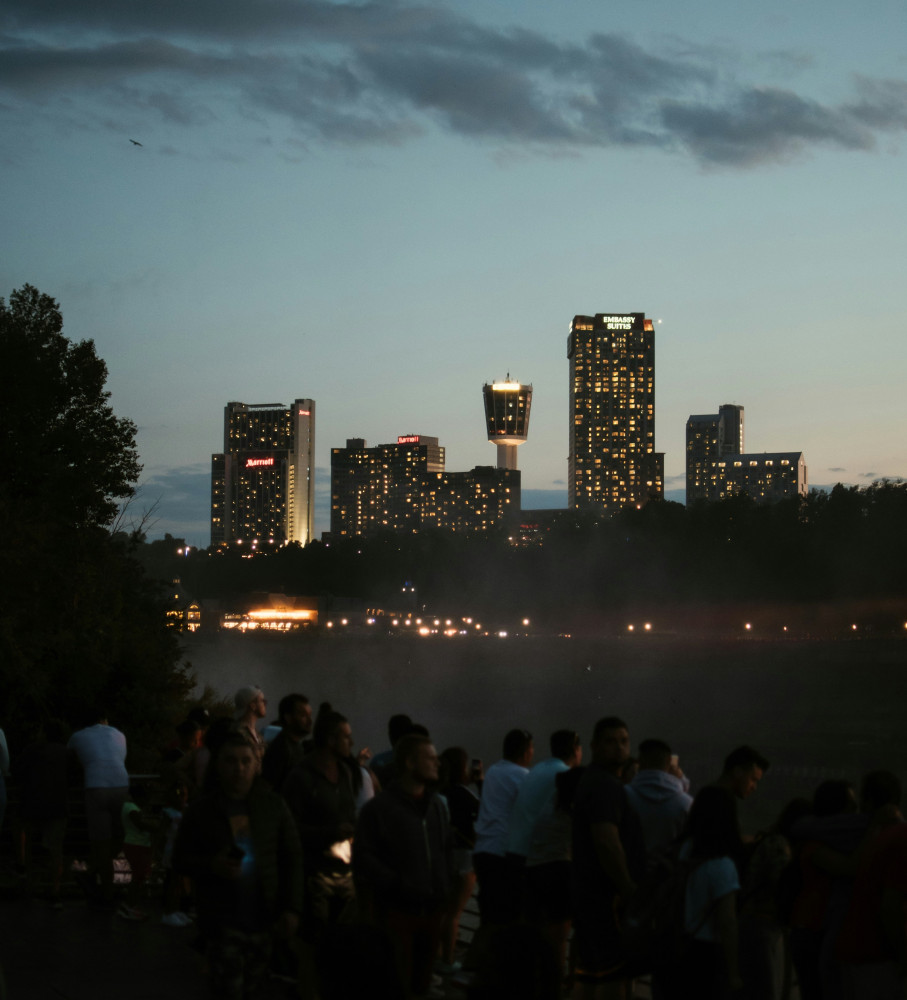
13 men arrested as part of human trafficking sting in Niagara Falls
Over the course of a four-day investigation at a Niagara Falls hotel, Niagara Regional Police officers arrested 13 men for trying to have sex with a person they believed was an underage girl.
The project run by the NRPS Human Trafficking Unit targeted individuals trying to purchase sexual services from “young persons” over the internet.
The 13 men arrested range in age from 22 to 60-years-old. All are charged with luring a child for the purpose of obtaining sexual services; obtaining sexual services for consideration from a person under 18 years; and inviting/counseling sexual exploitation of a young person.
“These arrests showcase the dedication of our members in ensuring some of the most vulnerable members of our community are protected, sending a strong message that predatory behaviours associated with human trafficking will not be tolerated,” stated NRPS Chief Bill Fordy in a press release.
The details of the investigation are not shared in the release, but police forces will often have undercover officers pose as underage people online, or post fake ads for sexual services as part of investigations colloquially known as “John stings”.
NRPS would not share further details about the sting, citing the need to “protect the integrity of ongoing and future investigations”.
These types of proactive investigations are critical enforcement tools used to send a message to offenders looking to exploit minors over the internet. The potential presence of undercover officers in these black markets can help drive down demand, which in turn can help eliminate the profitability of this crime for those looking to exploit victims through human trafficking.
Niagara Falls, one of the natural wonders of the world, attracts millions of tourists annually. The busy destination with its dense network of hotels and short-term rentals creates a perfect setting for traffickers to hide.
(Alexis Wright/The Pointer files)
Niagara Region, especially the busy tourist destination of Niagara Falls with its numerous hotels and short-term rentals and proximity to major roadways and borders, create a perfect backdrop for traffickers to hide their crimes. The number of people passing through also creates an endless flux of potential clients. While the majority of the 13 men arrested were from municipalities within Niagara Region (4 from Niagara Falls; 3 from St. Catharines; 2 from Thorold; and 1 each from Welland and Niagara-on-the-Lake), one accused came from Buffalo New York and another came all the way from Windsor.
To try and bridge these geographic borders, NRPS partnered with several other police organizations as part of this project, including the RCMP, the Canada Border Services Agency, and the Department of Homeland Security in the U.S. The project also received support from the OPP Anti-Human Trafficking Joint Force Strategy, a partnership between police forces in Windsor, Halton, Kingston and Durham).
“We are committed to fighting human trafficking through intelligence-gathering and working cooperatively with law enforcement and community partners to support victims and enforcement efforts,” Chief Fordy states. “Integrated resources, the sharing of information, a victim-centered approach and community partnerships are crucial to law enforcement’s effective response to this kind of crime.”
The rate of human trafficking in Niagara sits marginally above the national average at 1.5 incidents per capita in 2022 according to Statistics Canada data, but this number is deceiving and does not provide a full picture of this crime. Human trafficking is a notoriously underreported crime due to factors such as shame, fear and stigma.
“By its very nature, human trafficking is a covert activity,” reads a report from the Canadian Centre to End Human Trafficking which identifies Niagara and other major cities along the network of 400-series highways as hotspots of trafficking activity. “Because sex trafficking is often hidden, difficult to detect, and frequently stigmatized, many victims and survivors may never disclose their experiences to a frontline service provider or law enforcement.”
Hotspots and corridors commonly used by traffickers in Ontario.
(Canadian Centre to End Human Trafficking)
Three days after the initial release announcing the results of the investigation, the Niagara Police went a step further and released the names of 11 of the 13 men charged in relation to the investigation.
“The Niagara Regional Police Service recognizes the impact that crimes against vulnerable persons have in our community,” said Deputy Chief Todd Waselovich in a statement to The Pointer.
“Upon further review of the scope of the publication bans in relation to this investigation, recognizing the importance of transparency and public trust, we have taken the step of releasing the 11 names that are not covered by existing publication bans.”
NRPS would not provide further details about the publication bans related to the two accused men whose names were not released.
Email: [email protected]
At a time when vital public information is needed by everyone, The Pointer has taken down our paywall on all stories to ensure every resident of Brampton, Mississauga and Niagara has access to the facts. For those who are able, we encourage you to consider a subscription. This will help us report on important public interest issues the community needs to know about now more than ever. You can register for a 30-day free trial HERE. Thereafter, The Pointer will charge $10 a month and you can cancel any time right on the website. Thank you
Submit a correction about this story


